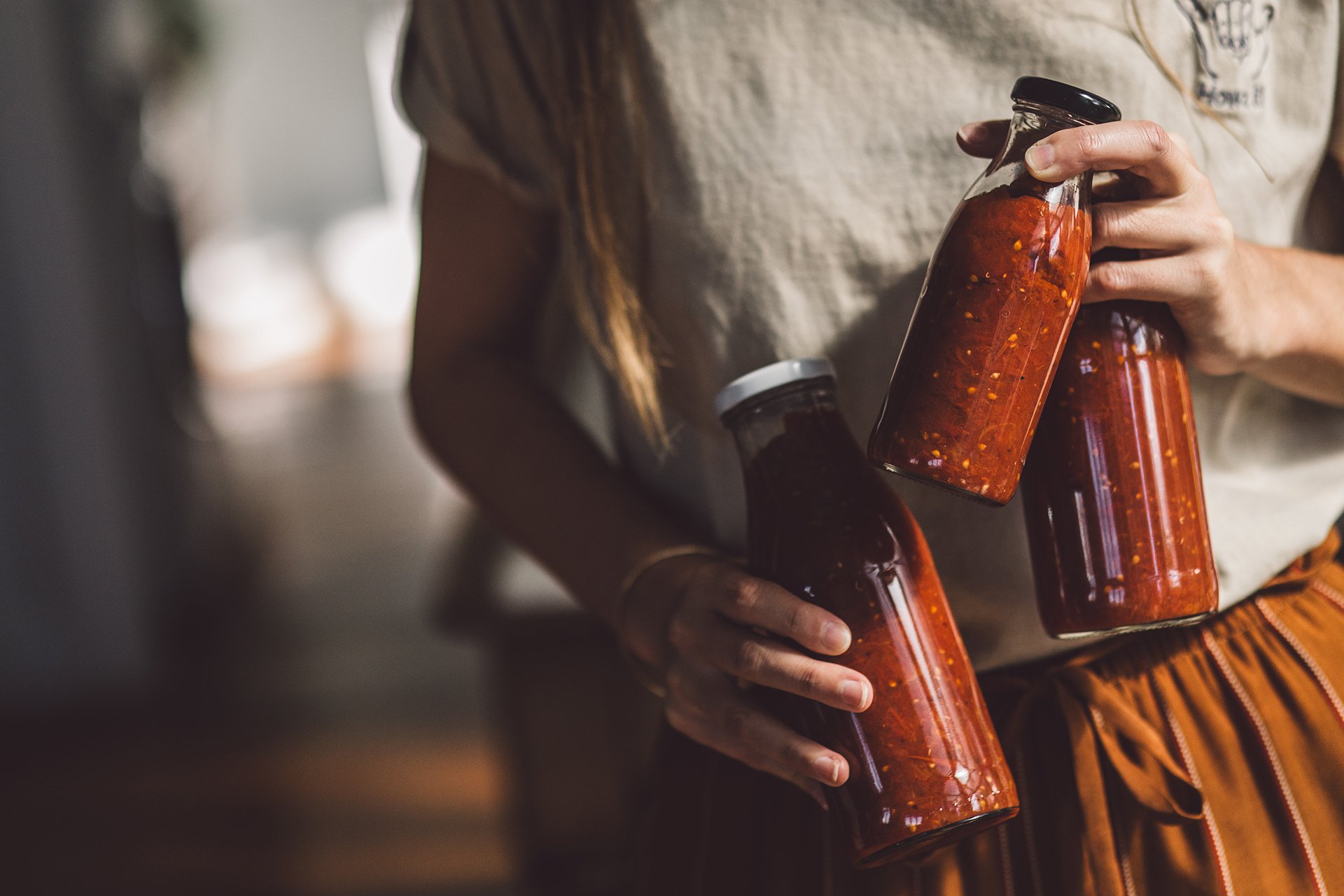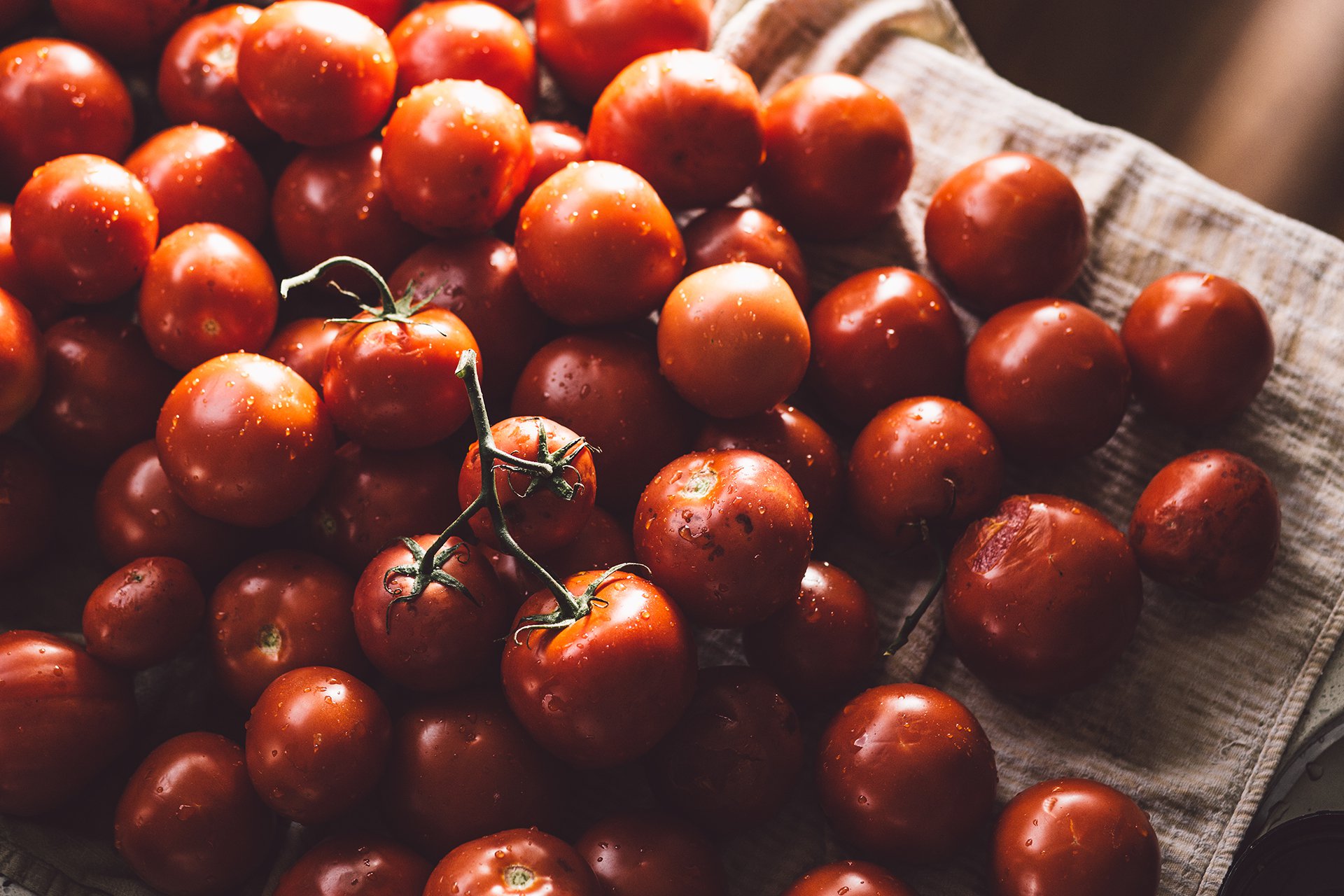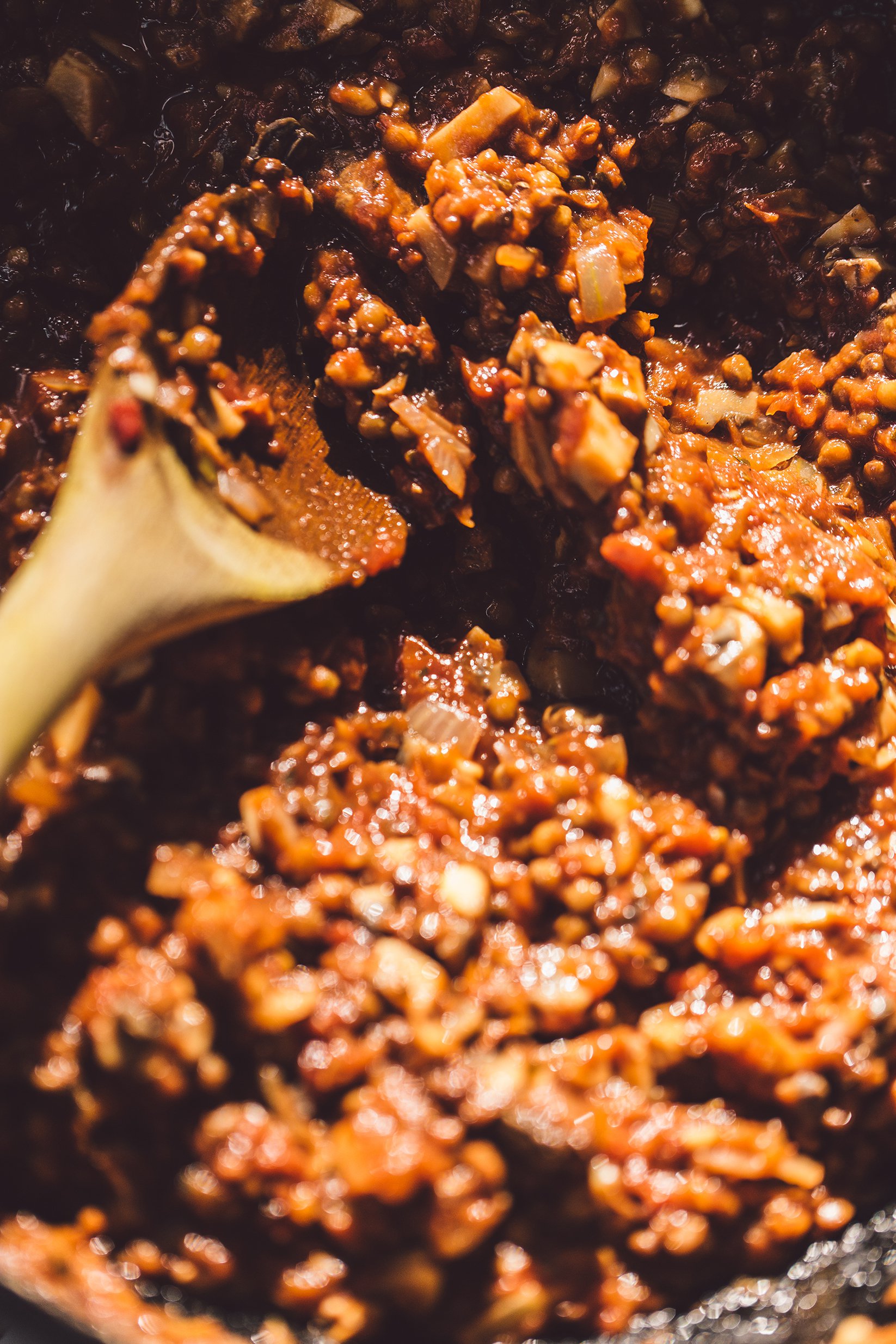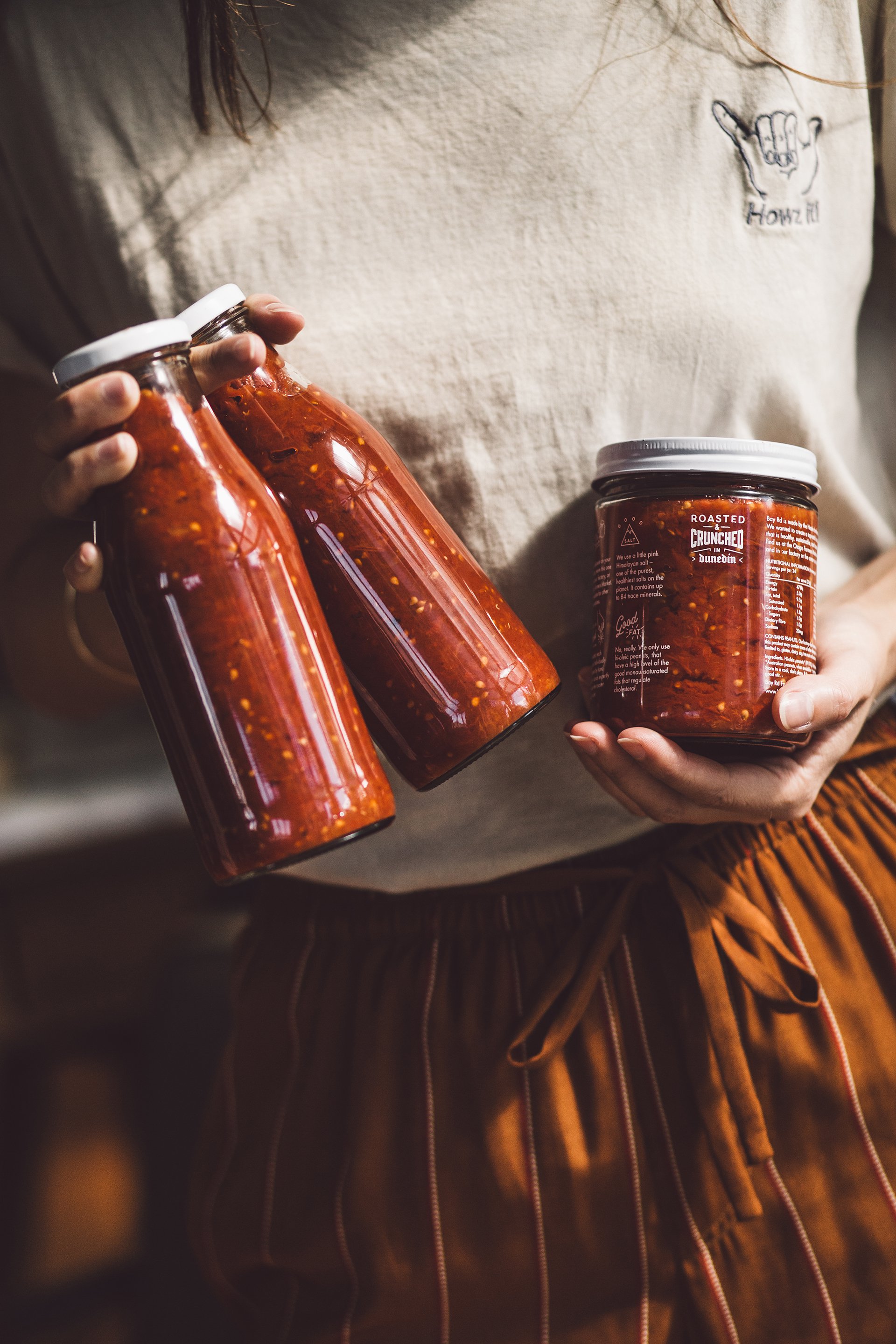Method
First, cut the ripe tomatoes in halves or chunks, loosely removing the core. Place the tomatoes in a large pot over medium-high heat, cover and bring to a boil. Stir occasionally to avoid the tomatoes sticking and burning at the bottom of the pot.
Simmer for approximately 30 minutes to 1 hour, depending on your stove potency and volume of tomatoes. Keep stirring from time to time until the liquid rises to the top and the tomatoes break into pieces.
Blend the mixture with a wooden spoon, and simmer until reaching the consistency of a thick and silky puree, approximately 2 hours. It is a work of patience. Again, make sure nothing sticks to the bottom of the pot.
Meanwhile, sterilize your jars and or bottles. Bring a large quantity of water to a boil. Spread your jars and/or bottles (group them by height) with the lids in a large pot that you will hard-cover to retain the steam. Pour the boiling water in the pot (not in the jars and or bottles) and cover. Let it sit there until you fill it in with the sauce.
Once your tomato puree is ready, quickly add the lemon juice and mix. Carefully remove the jars and/or bottles from the pot. Fill in your containers with the sauce up to 1 cm from the top. Ensure your puree is always hot (approximately 80℃) to avoid bacteria development.
Clean the edge of each container thoroughly with a clean, dry cloth and tighten the lid. Screw the cap, but do not over-tighten to leave space to create a vacuum seal. Leave the jars and/or bottles at room temperature.
Once cooled, check that the caps have sucked down. If they haven’t, try to re-bottle and if it is still not working, change the lid and bottle again.
This tomato puree will keep up in a cool, dark place for 1 to 2 years unopened. Once opened, store in the fridge for up to 3 days.







